by Wallace Wyss –
If I had to name a culprit, who was behind the appearance and disappearance of a Ghia bodied Cobra roadster I’d say Alejandro De Tomaso. The quirky Argentinian was a customer of Ghia first, having them build his fiberglass mid engined Vallelunga coupes, but somewhere between ’65 and 67 he bought Ghia.
It was an easy buy because the owner, Ramadas Trujillo, was in jail and needed the money. The son of the dictator of the Dominican Republic, Ramadas thought he’d prove his worth by being an industrialist. However, Trujillo was an absentee landlord (visited once a year, and only for an hour!) of Ghia and after his buy-in price of $3m (Trujillo had bought in after Luigi Segre died in February, 1963, at age 44), he sold his shares to DeTomaso for $650k. Included in the deal were numerous unfinished cars, whose finished value neared $650k at the time. But this couldn’t have been one of those cars because the 427 Cobra chassis didn’t exist in ’63.
DeTomaso was the son of wealthy land owners in Argentina but had fled one step ahead of Juan Peron’s goons and landed in Italy penniless. But as luck would have it he met a tall blonde American at a parts counter and since they were both race drivers they bonded, and then legally bonded as man and wife. She happened to be from a rich family who bankrolled his car ventures starting around ’65-’67. They were benefitting when DeTomaso sold the Ghia and Vignale names to Ford, still leaving an out for him to build the Pantera.
Back to ’65 Turin Salon, this roadster appears. It has a lot of Giugiaro styling influences in the side, especially the side fender vent which had been on his Ghibli for Ghia. But the nose and tail are awkward, especially the pizza pie sized tail lights. And the interior is Mickey Mouse, as bad as his Vallelunga.
Giugiaro designed the Ghia 450SS and the DeTomaso Mangusta coupe during this time period so it’s easy to imagine he got this assignment too, since DeTomaso was courting Ford, knowing Ford still wanted to build a Ferrari like car. He failed to sell them the Mangusta but did sell them the Pantera, starting with 1971 production.
The Ghia Cobra had a lift-off hardtop like the Giugiaro designed 450SS. I suspect it was built on the chassis of one of the Cobras Shelby had left in Europe. Maybe even rebodied without Ford’s permission. Certainly Ford never bankrolled the car. They were soured on the 427 Cobra when Shelby failed to build enough of them to homologate it as a production sports car, in ’65 it was doomed. Hence it had to run against prototypes which were lighter and faster. One of the curious things about this one off is the tall ungainly windscreen. Too tall and upright to be from the Ghia 450SS, another American engined car Ghia was building at the time, that one for Burt Sugarman, a Hollywood guy. Roughly 52 of those were built.
There was another Ghia bodied Cobra at the time, a one-off coupe that used a body designed earlier for the Fiat engined Supersonic, maybe even the 1950s. That car was in the UK for some decades now. But this roadster, if it is a 427 with an intact SN plate and numbers matching engine, would be a real prize to rebody as a 427 Cobra. But the question is, who was it built for? Who owned it, where did it go? DeTomaso sold off at least 20 of the cars in the DeTomaso museum when his firm went bankrupt but I don’t recall this car being one of them.
Any clues appreciated so this car’s fate can be recorded in history.
Let us know what you think in the Comments.
THE AUTHOR: Wallace Wyss has written three books on DeTomaso. At present he is in the thoroughbred horse trade and a fine artist, doing commissions of significant automobiles.
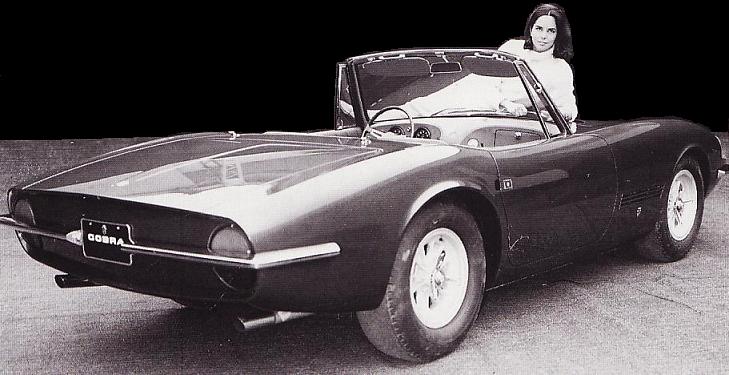


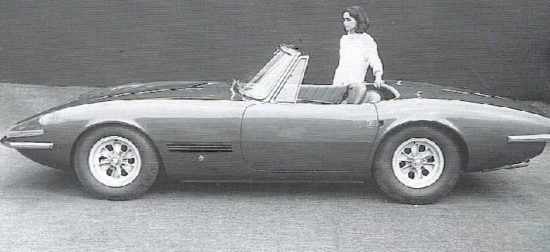

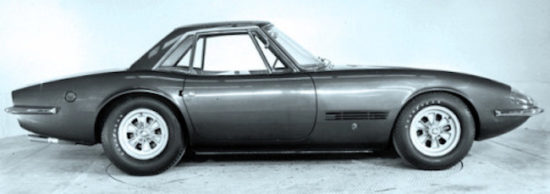
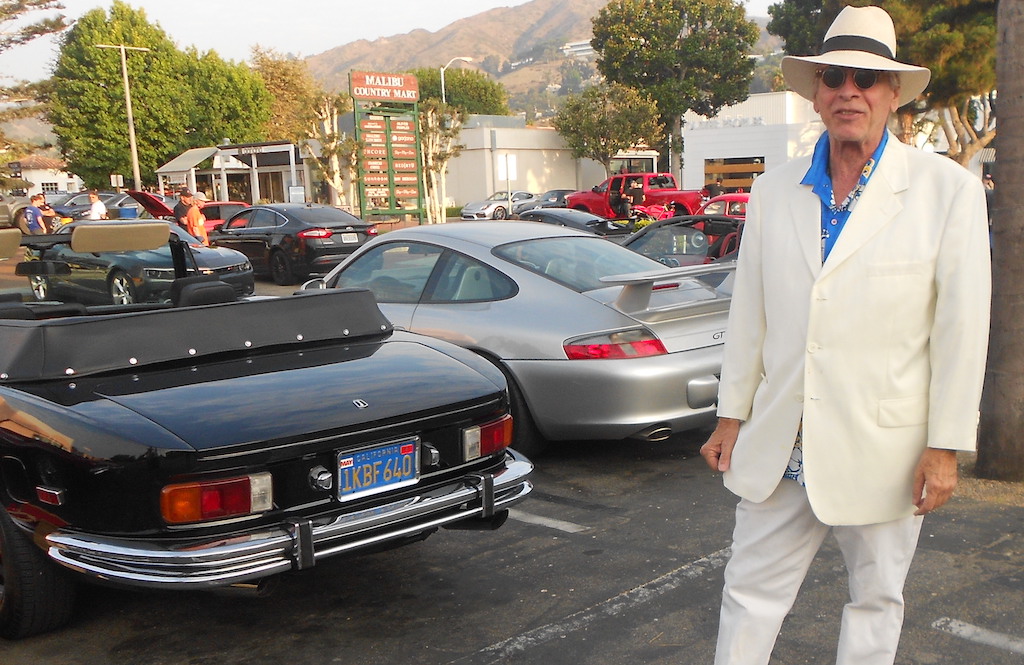
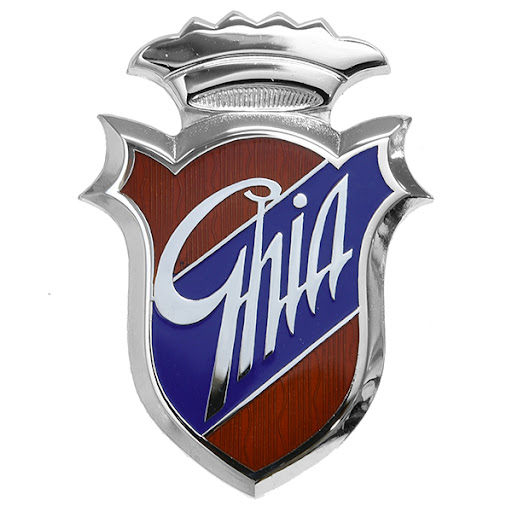


I think this article is a fantastic keeper, because it exposes fundamental holes in my knowledge base, even after years of reading car magazines.
The car’s styling seems a complex tease of themes. The rake on the windshield does not bother me, as it sets the car apart, putting up its finger against all odds.
The lines are extremely similar to the Intermechanica Italia – which started as the Griffo.
It does remind me of the Italia – but the Italia is not related to the Iso Grifo.
http://www.team.net/www/ktud/ghia/
is a website with a tantalizing comment that Ghia considered having Giugiaro design a body for the Cobra but was directed to do the Mangusta instead. The trouble with their claim is no proof. And he won’t claim it as his own. Which is too bad because, if it was found, it would be worth a lot more as a creation of Giugiaro.
Found side view of Ghia 450/SS so plot thickens. Is it the same hardtop? The same windscreen? The same side vent window? Was the Ghia Cobra just an alternate design for the 450/SS hastily fitted with this body so as to pitch to Ford/Shelby? They saw rich Americanos coming with bags of money so maybe they dug every old idea up they could find to sell them. And they succeeded, selling them Ghia, Vignale and the Pantera….
It is a beautiful car. A one off car on a Cobra chassis. A bit of history and should be kept as is. I wonder who owns this car?
With the Kamm tail and flowing fenders it looks to my eye more like a Ferrari 365 California
Too bad I can;t ask the late Tom Tjaarda, but I see the similarities.He did that car around 1965 (for ’66-’67 model year) while he worked at Pininfarina.
It was the continuation of a series of limited production cars which included the 410 and 400 Superamericas.Only 14 were built. He might have seen the Ghia Cobra since that was probably done in ’65. If the Ghia Cobra is found I’d like to park it next to the 365 California spyder.
Wallace: I think there are variations in the pictures due to different times of the photo shoots. The bolt upright windshield appears to be shown into the first 4 pictures. The 5th picture with the hard top, shows a right side fuel filler, Firestone tires and the windshield rake has been changed to a lower more attractive angle.
I have a 1994 Specially Car magazine that I kept specifically for this article on the Ghia Cobra by Dean Batchelor (beautifully photographed probably by Dean or Bob D’Olivo) that has a Los Angeles photo shoot taken just after the car made its 1965 Turin Debut in October. It shows the car again but with new Yellow ‘?’ Stripe Firestone tires which still appear to have the stickers on the treads. It also has the more raked windshield, visible loops under the front of the car for tie-downs and possibly lowered a small amount. There are 7 pictures and talks of Ray Geddes of Ford, and suggests that Shelby initiated Ghia to build the car and sent a chassis.
Wallace, I am happy to send you nice clear photos of this article for your research. This is a Peterson publication so I imagine there are many more photos from this shoot that weren’t published.
David N
Thank you. The gift of this article makes me think past the quaint rhymes to the haunting Frank Sinatra line, “Where are You?”
You have a sharp eye that you can spot these styling differences. I am embarrassed as a Shelby biographer that I never asked Shelby about it. But then that was the way he played it. I remember when he funded the Lone Star, a mid-engined Cobra similar in shape to a racing Ferrari, and decided not to build it in quantity,he sold it out the back door, (now restored and owned by an Arizona man) Maybe he thought airing rejected ideas made you look like a loser where he only wanted to be identified with winners.
I now found two ref. that say that Shelby commissioned two Cobras with this body. style– CSX5001-5002 – The date is unclear, some say
1966, two coil-spring Cobra chassis were delivered to Carrozzeria Ghia (Turin, Italy) as the basis for a modernized Cobra concept car. The current whereabouts of both vehicles is unknown. Another rumor is that they were both rebodied as Cobras once prices began to rise. So if that;s true, where are the Ghia bodies?
This vehicle was a one-off design concept submitted for the AC Cobra, intending to replace its woefully-out-of-date roadster body style. Ghia based it on the then-current Ghia 450 S Spyder design concept originally created for Fiat by Sergio Sartorelli. This same platform would be used for the Cobra by shortening the wheelbase and adding distance from the windshield to the front wheel C/L – while moving the 427 engine rearward. It was a really striking rendition, but it was not accepted. With full doors, roll-up windows and convertible roof (even a removable hardtop), it was really challenged for adequate driver space and ease of entry.
This same Ghia 450 S Spyder concept was also used as the basis for the Ghia 450/ss. The wheelbase was extended and the body widened, while the engine was positioned further forward to make it a more roomy, comfortable and luxurious cockpit, compared to both the Ghia Cobra and the 450 S Spyder concepts. Compare the distance on all three cars from the edge of the rear wheel arch to the trailing edge of the driver door.
The removable hardtop pictured on the Ghia Cobra was adopted as an option for the Ghia 450/ss, when it went into limited production in 1966.